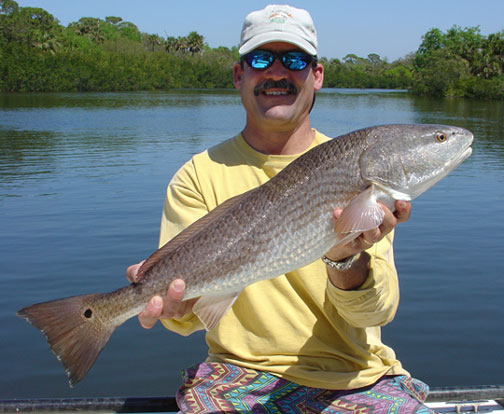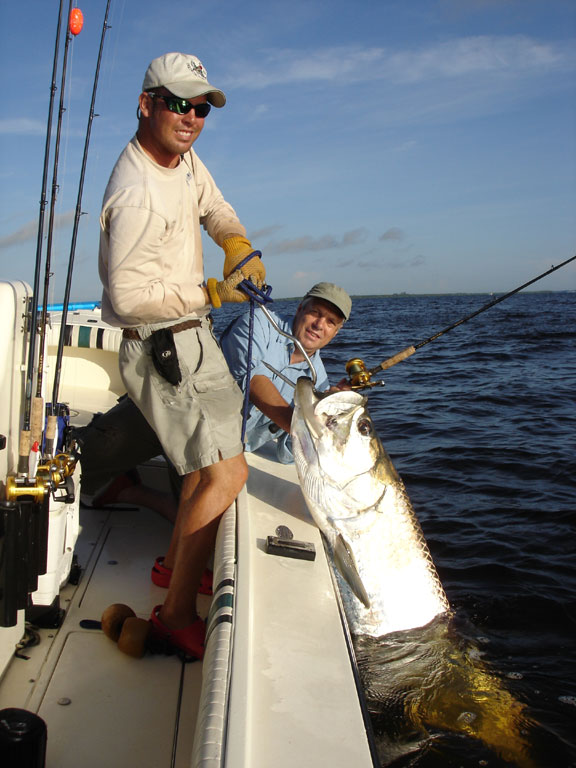|
As predicted,
the first cool fronts of fall have swept the state. Combined with the
decreasing hours of light versus darkness, the fall starting gun has
fired along Florida's Gulf Coast.
| Redfish are schooling as part of their
fall migration and spawning patterns. In my southern range, the
flats behind our barrier islands are classic spots to find these
fish. The fish are easily spotted pushing water on the edges of
the flats at low tide. These fish are often "nervous" in the
ultra skinny water. So what appears to be hundreds of fish in a
school may only yield a couple of fish even with a stealth
approach. The fish tend to be less wary on higher water and my
favorite approach has always been to ambush the fish as they
travel across points on the change of the tide.
On the shallow flats to the north, my pattern is the opposite.
Here the water is very shallow and very clear. I prefer to fish
the last third of the flood tide. I favor cul-de-sacs, creek
mouths and points. The bottom consistency is made up of hard sand,
limestone flat rock, and oyster bars. While I do not necessarily
see the large schools as I once did in my northern theater, the
terrain serves to keep boating and fishing pressure to a minimum. |

"Jungle Jim" with a nice North
Suncoast redfish.
|
|

Bobby Phillips with a transitional snook.
|
I'll take a few less fish in
exchange for being left alone to enjoy the reason for which we
retreat to the water in the first place. Snook are scattered as they return from their spawning ritual
in the gulf. For now, we have been picking up a few on the first
oyster bars outside of creek mouths and in the potholes adjacent
to oyster bars and deeper water sloughs. As we move through
October the fish will stage together in areas just outside their
winter haunts. The fish will feed well in attempt to restore body
fat lost during the rigorous activity of spawning. Stored fat will
serve staple in the animal's survival as their metabolism slows
to near hibernation in the coldest days of winter. Snook can be
found throughout their range now and traditionally up to
Thanksgiving when the majority of them will be well inside the
line of demarcation. |
Spanish mackerel,
bluefish, jacks, small sharks, cobia, ladyfish, and
"sub keeper" grouper are all over the deeper grass
flats and shallow rock piles. Any of these species are a possibility
when pulling along side the numerous bait schools just offshore. I
prefer to fish particular spots near shore that have proven successful
for me over the years. Generally these areas are deep water "salt
n' pepper" grass flats, springs, troughs or low relief rock piles.
I start the party with floating a frozen chum block and then "sweeten" the drip by chumming with live bait. While these fish are
not the "glamour species" of the shallow flats, it is the type of
action packed fishing that is second to none.
|
Among the secret
society of off-season tarpon hunters, there has been a major run
of giant tarpon the past weeks. The fronts are starting to pass
and the winds have been up more consistently than just these past
few weeks, so I guess it is safe now to let the cat out of the
bag. The fish are being found in the bait schools in several of
the typical summer haunts. They are moving around quite a bit, but
when you find them, they are biting better than they have all year
and a razor sharp MirrOlure is all that is needed. There is a
risk, however. The schools have been generally moving to areas
near the open gulf. They are feeding and swimming in that general
direction because they are leaving! The fish will be a day-to-day
call, often dictated by the wind speed, direction and the
frequency in time intervals that we have been able to stay on
them. |

Brian prepares a blackwater giant tarpon for
release. |
 |
The most reliable
action with tarpon this week has been in the rivers and
residential canals. These fish are juveniles, which run from 8 to
40lbs. In the river, occasionally we'll hook fish over 80lbs.
Those fish make short work of our unqualified light tackle and are
only good for a laugh and a couple of "high fives".
There is no better
time for a shoot at the pinnacle of Florida Gulf Coast flats
fishing, the "grand slam". Snook, redfish, and trout are
readily being caught and often on the same spots. A little extra
effort and some time-honed experience will get the fourth "grand
slam" prong, the tarpon. On days when it is "not
happening", you are waiting on the tide, or you just want to
have some non stop fun, the near shore migratory bait run is just
a 10 minute run away. Getcha
Sum!
Screaming Drags And Tired Arms!
Robert McCue
◄▪▪▪▪▪▪
Coarse Fishing UK editor, J. Fox, spent his 50th birthday
aboard the Bounty Hunter. Here, Brian prepares to releases one of
3 tarpon he landed on his milestone occasion.
|
|



![]()